My experience with Aleppo pine is limited. Beyond pruning nursery stock for several years, I have yet to train one as bonsai.
Aleppo pine, Pinus halepensis, is a great example of a species that can be trained by very different means in pursuit of very different goals.
This is possible because the species is incredibly vigorous when the climate is right (i.e. when it is hot). Native to the Mediterranean region, Aleppo pine can be maintained with either juvenile or mature foliage.
When left alone, healthy Aleppo pines can produce new growth three-to-four times a year without pruning, says Ofer Grunwald, an artist and bonsai practitioner who worked extensively with the species in Israel.
Years ago, Ofer developed a technique for cutting Aleppo pines back hard several times a year to quickly ramify the branches. The approach produced ample juvenile foliage and very short internodes.
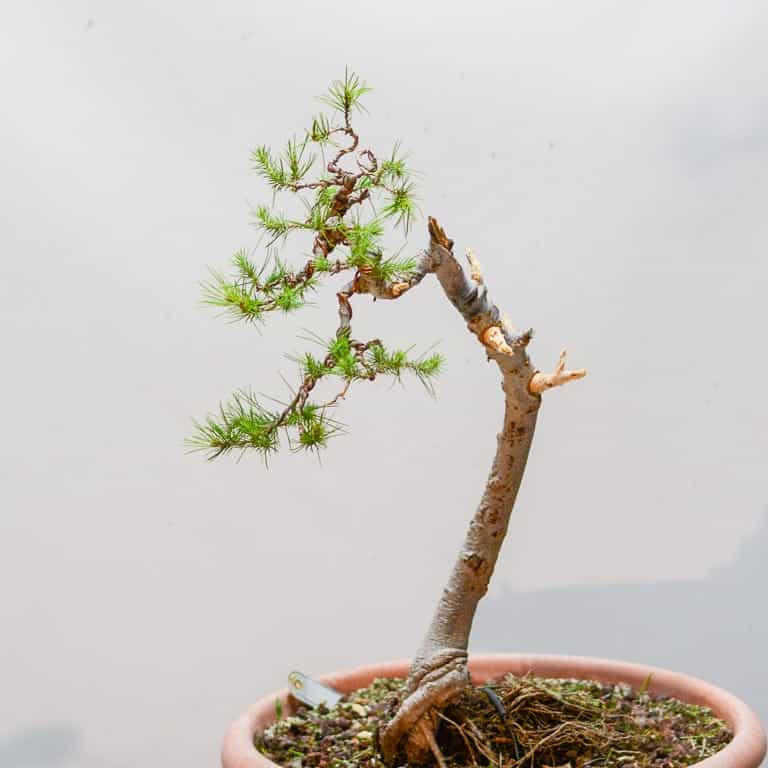
Aleppo pine by Ofer Grunwald in 2015
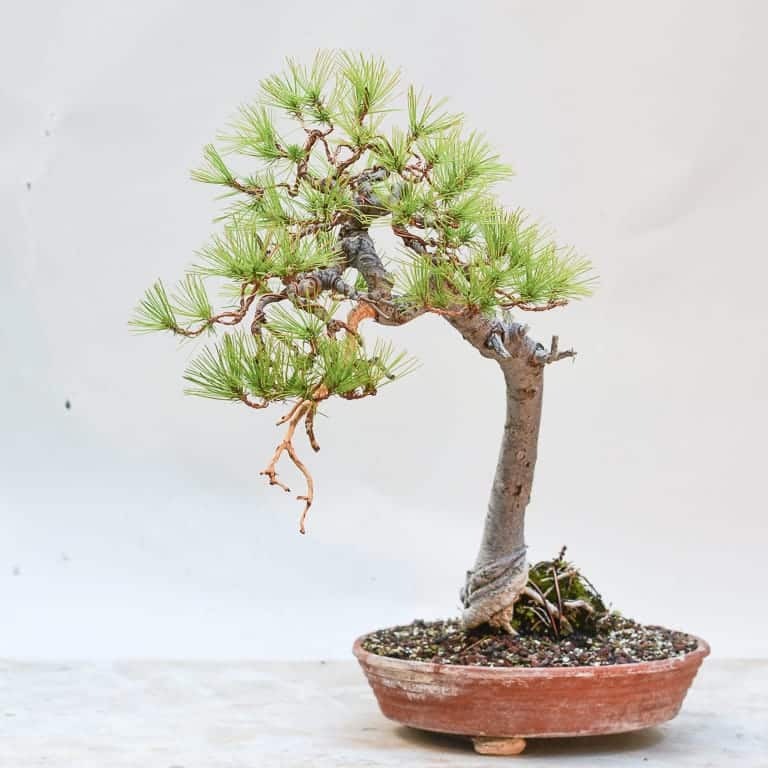
The same tree in 2018
How hard was the cutback? Here’s an example.
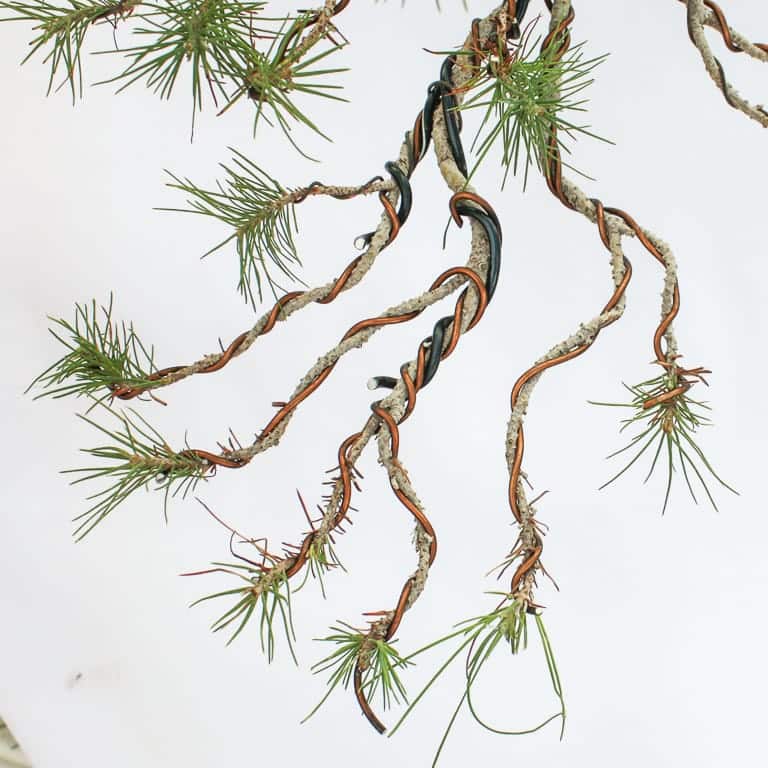
After cutting back juvenile foliage
If a specimen grew strong during the winter months, Ofer would prune in June, just before the second flush. This pruning resulted in lots of back buds which then filled in during the fall flush.
Despite his results with the technique, Ofer moved away from this approach in acknowldegement that styled specimens looked good for a very brief time before the trees got out of control again.
Some vigorous growth can look good on Aleppo pines, but the look isn’t for everyone. Here’s an example of mature needles mixed with juvenile shoots.
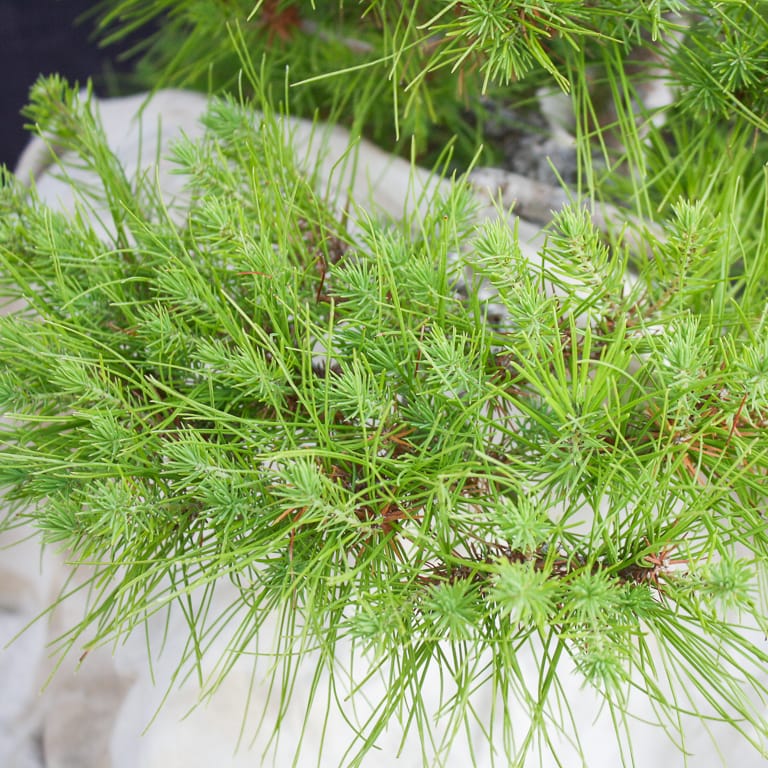
Juvenile shoots emerging from mature branches
This and the above photos courtesy of Ofer Grunwald
When cutting into mature needles on Aleppo pine, you’re likely to see needle buds develop near the cut site and further back along the branch.
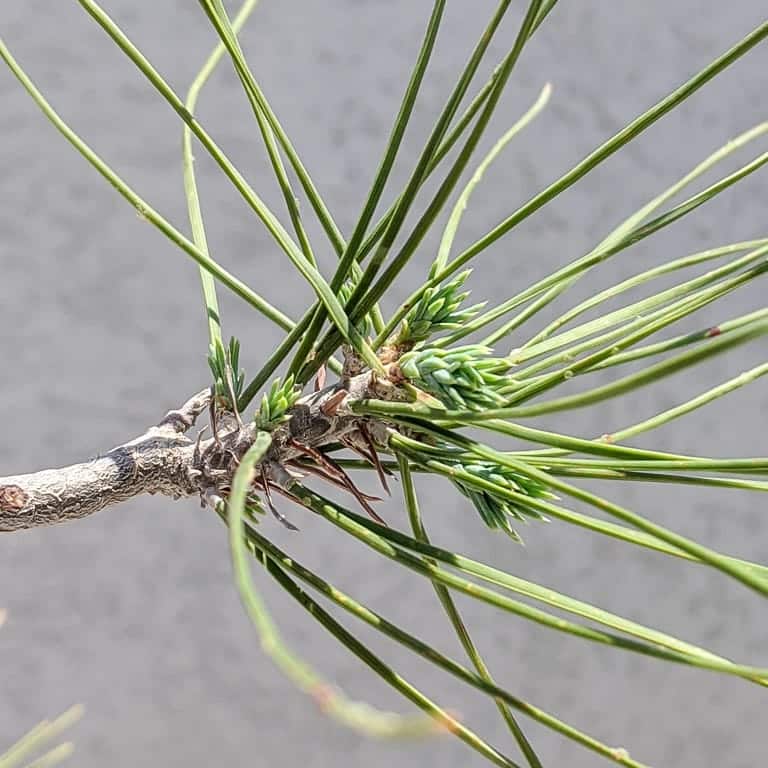
Juvenile growth on needle buds
Photo courtesy of Shay Cohen
If these juvenile shoots are left alone, they’ll begin to produce mature needles that can give Aleppo pines a completely different character.

Mature foliage on shoots that started out with juvenile foliage
Photo courtesy of Shay Cohen
Here’s an example of a tree that previously had juvenile foliage but now has mature needles after growing freely for a year.

Aleppo pine from the Jerusalem Botanical Garden
Photo courtesy of Shay Cohen
Ofer’s current approach to Aleppo pine is exactly the same as his approach to red pine. By letting the tree grow more between prunings and cutting back less severely, Ofer finds it easier to maintain an appealing form for the trees.
Ofer and Shay generously shared their experiences with Aleppo pines in a multi-continental call this week which made me interested to learn how the species can best be trained in Northern California.
Around the same time, Graham Hutchinson of Western Australia provided further examples of Aleppo pines with juvenile foliage.
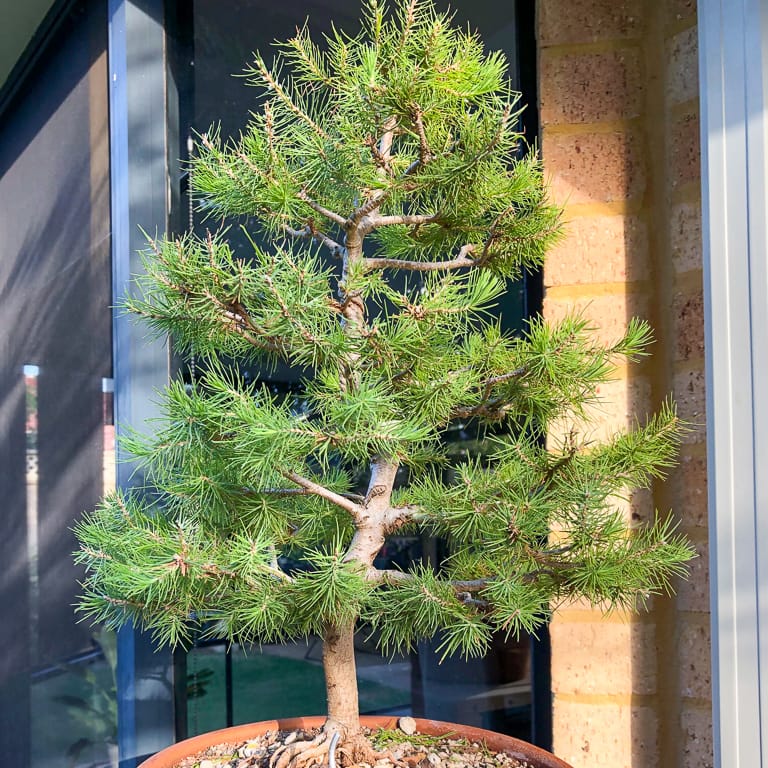
Aleppo pine with juvenile foliage
This and the following photos courtesy of Graham Hutchinson
It appears that Aleppo pines can be maintained with juvenile foliage for many years. Graham provided photos of the following trees that have been in training for about thirty years.
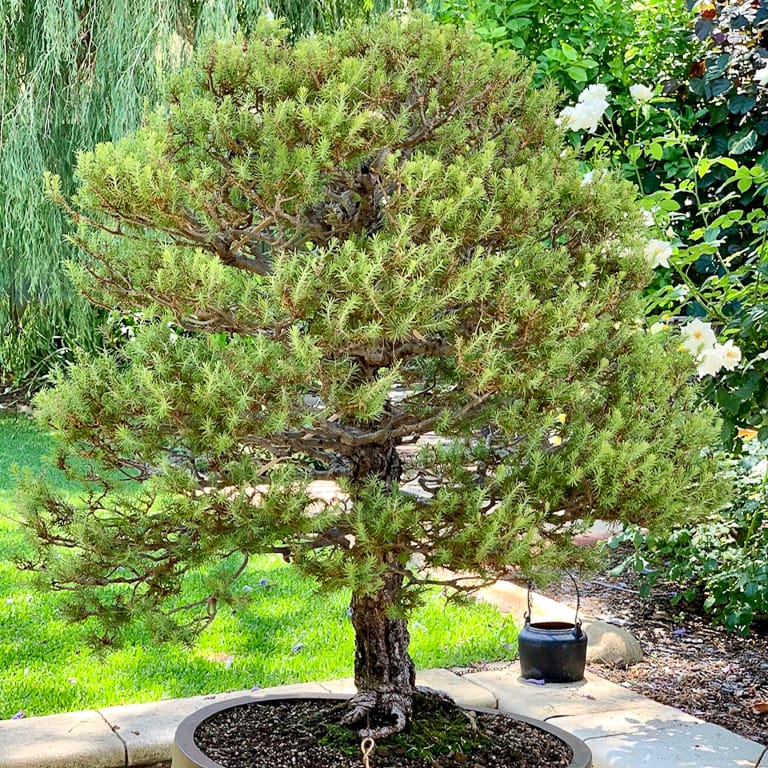
Andy’s Aleppo pine before cutback
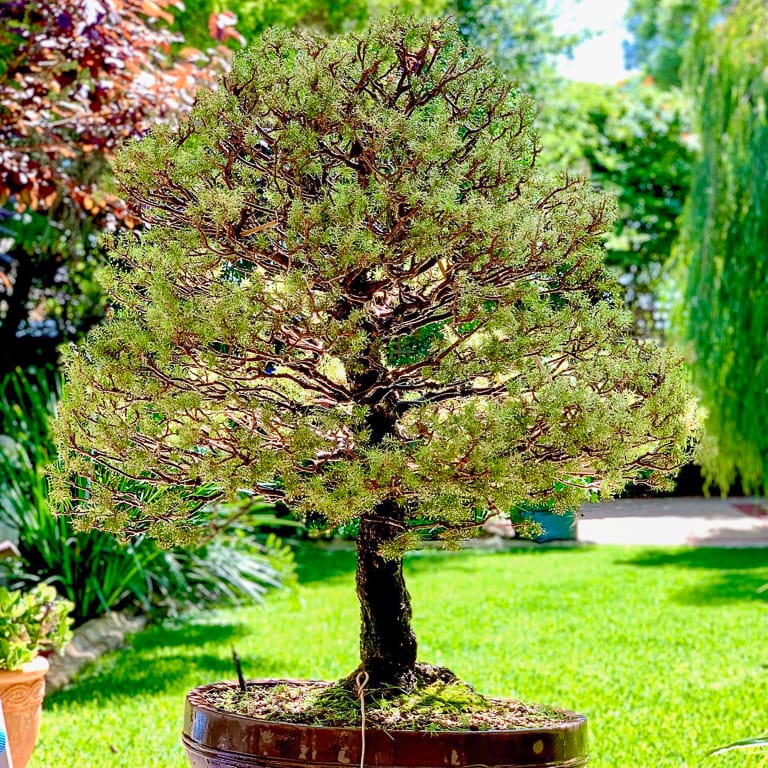
Andy’s pine after cutback – note the great branch density
And here’s another example.
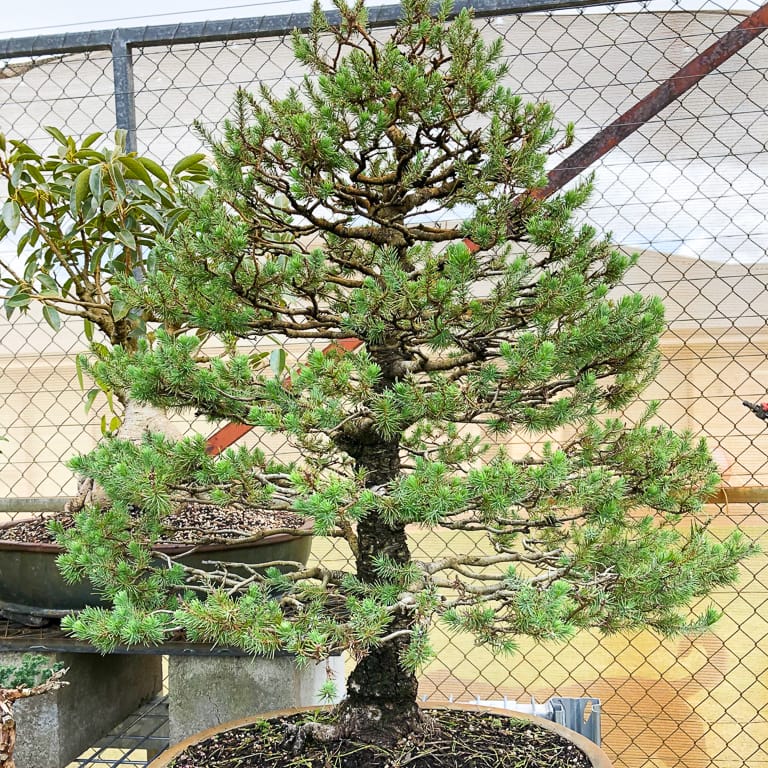
Peter’s Aleppo pine
Seeing such variety among these Aleppo pines around the world makes me curious about how me might work with domestic pines like the loblolly that share similar growth characteristics.
Thanks to Shay Cohen, Ofer Grunwald, and Graham Hutchinson for help with this post, and to Andrew Robson, Jeffrey Robson, and the many commenters here and on Instagram who helped with the original decandling post that kicked the topic off. Your enthusiasm suggests we’ll see more and more pine species successfully grown as bonsai in coming years!
Have questions about your deciduous bonsai?
Michael Hagedorn and Andrew Robson have answers. Michael and Andrew are soliciting questions for an upcoming episode of the Bonsai Wire Podcast (more about that soon) and want your input. Submit your questions to talk at bonsaiwirepodcast dot com by August 18 and tune in to hear what they have to say around the end of the month!
Subscribe to Bonsai Tonight
New Posts Delivered Every Tuesday and Friday
Andy says
Juvenile foliage yes or no, none of the trees have nebaris to speak of. Not good.
Jonas Dupuich says
Hi Andy, are you hinting that you have suggestions for improving the surface roots of mature pines? A lot of my trees could benefit from that too!
José Alberto Pereira says
Here’s in the mediterraean zone we have the Pinus Pinea, the umbrella pine. It has the same caractheristic juvenile needle. I’m trying to do a bonsai eith this specie too.
Jonas Dupuich says
Sounds great José – the techniques are similar and I expect they’ll develop quickly. Let us know how it goes!
Mike Butler says
On a pine, what’s the difference between juvenile and mature needles? Seems to me you would want to use both techniques to build the tree and then maintain. Or am I missing something?
Jonas Dupuich says
Hi Mike – the short version is that juvenile foliage on pines is typically short and flat versus mature foliage which grows in bundles that contain one or more needles, depending on the species. Typical pine foliage or “pine needles” are examples of mature foliage.
Sometimes bonsai techniques stimulate juvenile foliage even when our goal is to produce a tree with primarily mature foliage. The big decision when growing pines like Italian stone pine or Aleppo pine is whether you want to show the tree with mature foliage or juvenile foliage. Depending on the decision, one might pursue very different approaches to stimulate the desired foliage.
Typically, pines produce juvenile foliage when they’re stressed. By keeping trees under stress, we can maintain the short, juvenile foliage. Less stressful development techniques can lead to pines with primarily mature foliage.
I hope this helps!
Graham Hutchinson says
Thanks Jonas,
Great to see the various approaches to developing the Aleppo pines, the mature needle examples have provided inspiration for future Bonsai.
I am am also interested in the development of Monterey pines / Pinus Radiata using mature needles as this species is readily available as plantation trees used for timber production in Australia, is there anyone amongst your blog followers that has experience with these trees.
Mark says
Wonderful information Jonas. Thank you.
Tony says
Thank you for the very informative post on ‘other’ pines as bonsai material…. in the early 1990’s Ernie Kuo developed at least a couple of bonsai using Pinus Pinea / Italian Stone Pine (the famous Pines of Rome) and maybe 10 years later some members of the Houston Bonsai Society took on the challenge as well (one was our mutual friend Ray) the idea was to encourage only juvenile growth…. from pics I recall they did succeed… my original plan with the large Pinus Eldarica I have was to encourage only juvenile growth….but has turned out more difficult maintain only juvenile growth so have allowed the mature needles to develop….the large trunk of my Eldarica i think can handle the larger mature needles. Again thank you for the post and the many photos of different examples.
Jonas Dupuich says
Thanks, Tony! I also remember Ernie’s work with Italian stone pine – he’d found a way to maintain very consistent juvenile foliage on the tree. The write-up is in issue #59 of Bonsai Today.
I think your Eldarica is plenty big enough for mature foliage – it’s not a small tree!
Antonino Saraceno says
LOL…you are right it certainly is a big one!.,…hahaha….i like to joke it fits the caretaker….hahaha
Mike Butler says
Jonas I posted some more questions from this thread in the forum – loblolly from Longview. I hope you don’t mind me steering you that way.
Jonas Dupuich says
Not at all – thanks Mike!